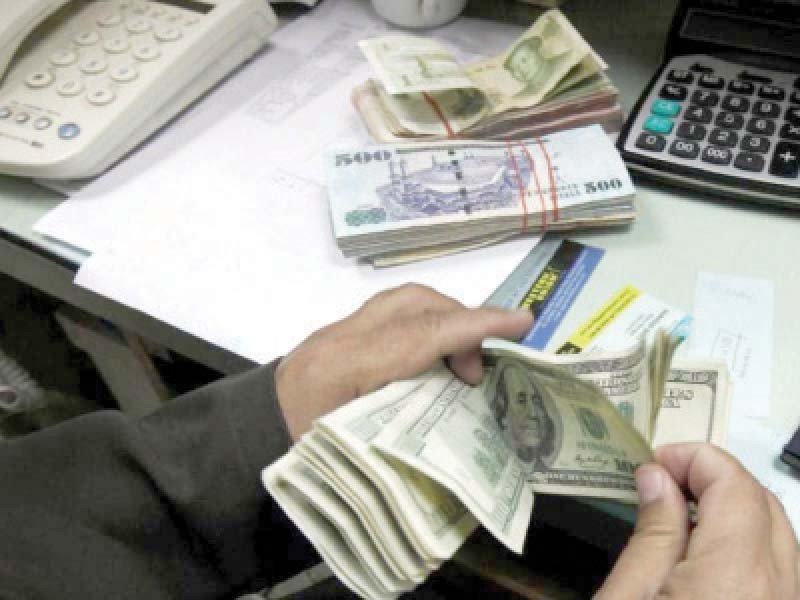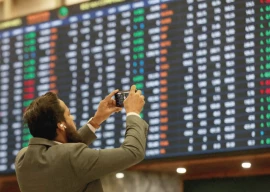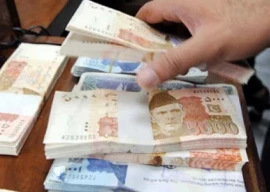
Pakistan continues to face challenges in its external account as the PKR to USD exchange rate rises beyond the Rs300 threshold, and the foreign exchange reserves held by the central bank decline. Although policymakers managed to reduce the trade deficit to less than $28 billion in FY2023 from $48.4 billion in FY2022, as noted in the summary published by the Pakistan Bureau of Statistics (PBS), the balance of payment crisis continues to pose challenges to policymakers.
The foreign exchange reserves held by the SBP decreased from $9.8 billion at the end of June 2022 to $4.5 billion at the end of June 2023, driven by external debt repayments and a lack of critical foreign reserve inflows. Imports decreased from $80 billion to $55 billion, a 31% decrease, as administrative measures were introduced to reduce ‘unnecessary’ imports. However, there was little respite from the surmounting challenges on the external front as the PKR to USD continued its upward march in FY2022, and the rising inflation rate took its toll on consumers. Exports decreased from $31.8 billion to $27.7 billion, a 13% decline. These indicators are disconcerting. It is particularly important to boost exports and increase the inflow of crucial dollar inflows at a time when the economy is facing significant challenges on the external economic front.
Also read China-Pakistan project to boost trade, investment
Pakistan has typically performed poorly in terms of its exports. While the exports of the SAARC region have increased from $271 billion in 2010 to $566 billion in 2022, a growth of almost 110%, exports from Pakistan have increased from $21.4 billion to $31.1 billion in the same time period, according to data extracted from the International Trade Centre (ITC)’s Trademap.org. While exports from Pakistan increased from $22.2 billion to $31.2 billion between 2020 and 2022, exports from the SAARC region increased from $354 billion to $566 billion, and Asean exports from $1.4 trillion to $2.1 trillion. The annual growth rate in exports of Pakistan between 2018 and 2022 of 8%, calculated by ITC, is lower than the growth rates reported by China, Vietnam, Bangladesh, and India during the same time period. The export growth observed in Pakistan during this period may have been exceptional in regard due to its own historical trend in exports but not at all in the context of the trend observed for the regional counterparts. Vietnam, for instance, has increased exports from $72 billion in 2010 to $335 billion in 2022, while Bangladesh has increased it from $20 billion in 2010 to $65 billion in 2022. With exports contributing only about 10% of the GDP in Pakistan, it is highly essential that policymakers consider policies that boost the productivity of our local producers so that they become regionally and globally competitive and in turn generate the much-needed revenue from export sales.
The textile industry dominates exports from Pakistan, with more than 60% of export receipts generated by this industry. Export sales have often been supported by the government through various incentive schemes involving concessional interest rate finance schemes, duty drawbacks to exporters, and discounted rates offered to manufacturers investing in machinery. The depreciation of the currency can only aid exporters who have made sufficient investments to take advantage of a more competitive rupee. Unfortunately, as the economy faces severe fiscal constraints that have led to the curtailing of such incentives, exporters of products that rely on such incentives are likely to suffer. It is imperative to design a policy that encourages exporters without having to rely on fiscal incentives. Exporters must consider investments in upgrading the quality of their products and focus on quality-based competition rather than price-based competition, which is dependent upon government incentives.
Further, non-tariff measures (NTMs) have become increasingly prominent in recent years. According to the TRAINS Portal hosted by UNCTAD, more than 80% of imports into China, the EU, and the US are covered by NTMs, while only one-third of imports into Pakistan is covered by NTMs. Technical measures focusing on quality standards and product specifications are likely to increase the demand for imports as they reduce the imports of dangerous and substandard products. Several countries are imposing technical regulations on their imports as well as domestic producers to raise the quality of products produced domestically and increase their export potential. It is essential that Pakistani policymakers focus on complying with technical measures that are prevalent in the export market destinations to improve the quality of the product and boost export capabilities.
In addition, it is imperative to make improvements to facilitate trade. The establishment of the Pakistan Single Window is a step in the right direction and has improved the quality of trade-related infrastructure. However, it is important to pursue paperless cross-border trade integration with major trading partners to reduce the costs of participation in international trading activities.
In essence, it is essential for policymakers to build capacities of the exporters so that it encourages them to upgrade the quality of their products, improve their ability to comply with technical regulations imposed by important export destinations, and reduce the cost of participation in international trading activities. Increasing exports from Pakistan requires a rather holistic approach.
The writer is the Assistant Professor of Economics and Research Fellow at CBER, Institute of Business Administration, Karachi
Published in The Express Tribune, September 11th, 2023.
Like Business on Facebook, follow @TribuneBiz on Twitter to stay informed and join in the conversation.



1727242355-0/Diddy-(1)1727242355-0-165x106.webp)


















COMMENTS
Comments are moderated and generally will be posted if they are on-topic and not abusive.
For more information, please see our Comments FAQ